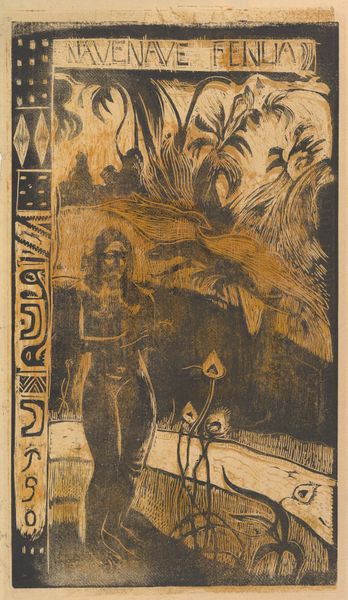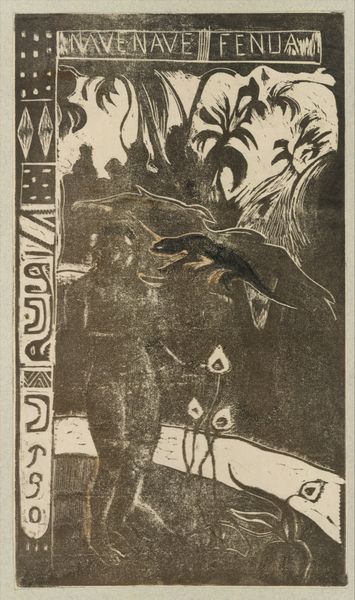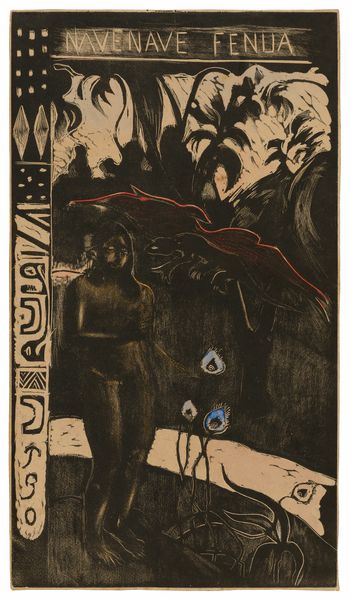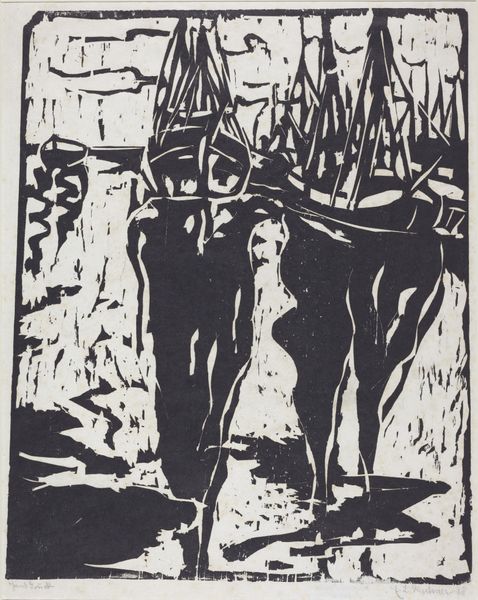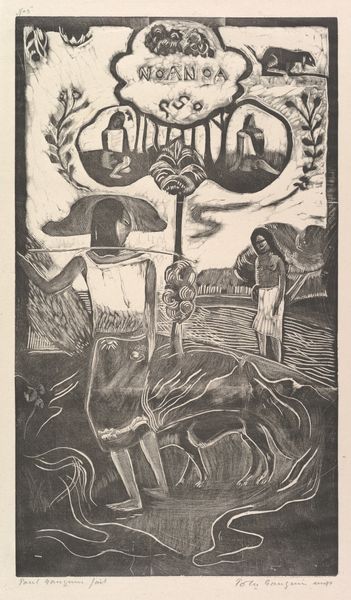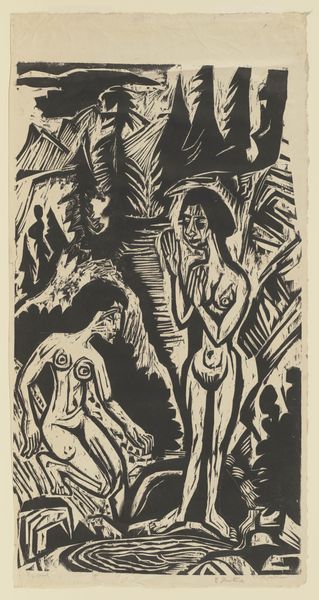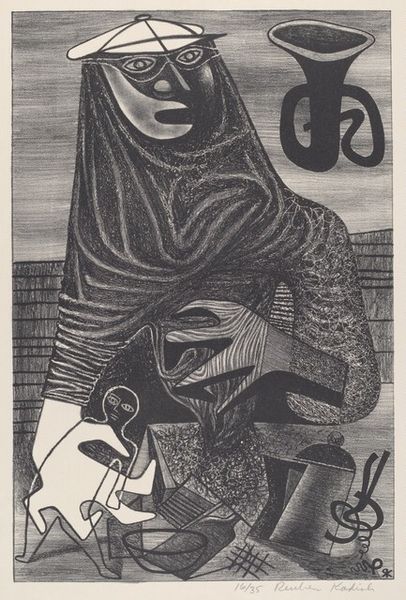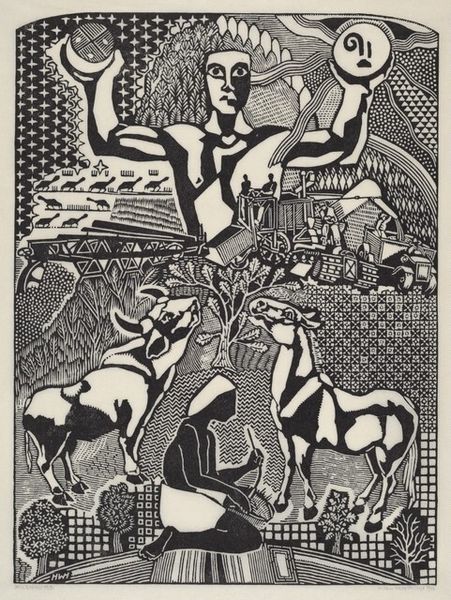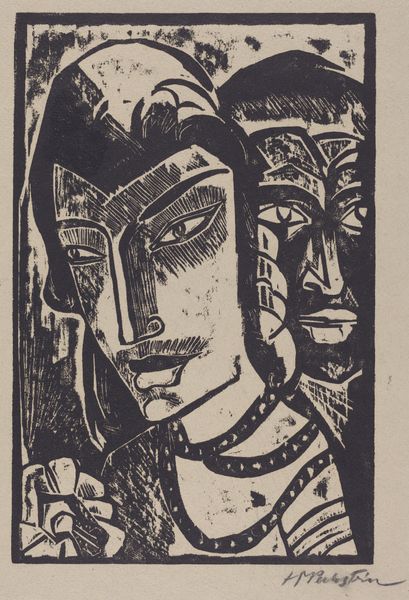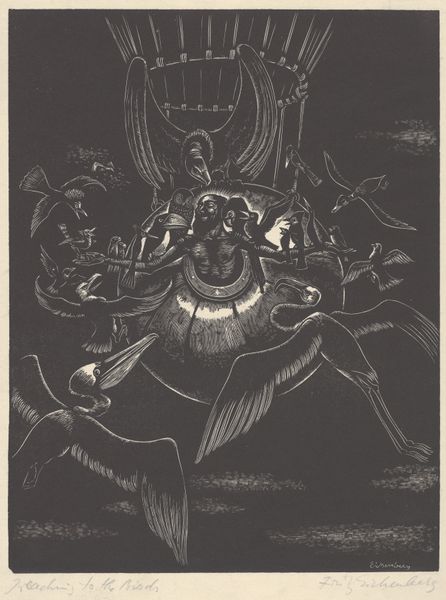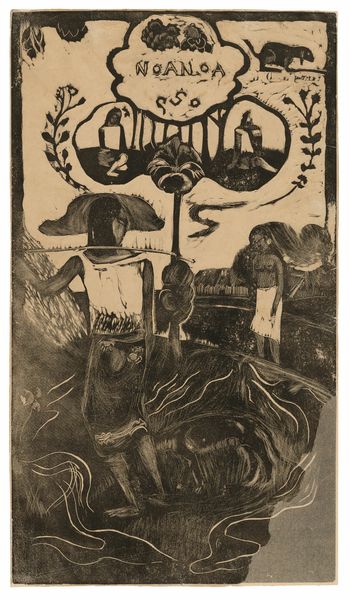
fibre-art, print, textile, woodcut
#
fibre-art
# print
#
landscape
#
textile
#
figuration
#
woodcut
#
symbolism
#
post-impressionism
#
nude
#
monochrome
Dimensions: Block: 14 in. × 8 1/16 in. (35.6 × 20.5 cm) Sheet: 17 1/8 x 10 1/4in. (43.5 x 26cm)
Copyright: Public Domain
This woodcut, Delightful Land, was created by Paul Gauguin, most likely in 1894, after his first trip to Tahiti. Gauguin sought to escape Western civilization, which he saw as overly industrialized and artificial. In Tahiti, he searched for an unspoiled paradise and a more authentic way of life. This print creates meaning through its visual codes and cultural references. Gauguin uses a simplified style and flattens the space to evoke what he understood as ‘primitive’ art. The Tahitian language in the title is a clear reference to the location in which it was made. However, it's important to remember that Gauguin's vision of Tahiti was filtered through his own cultural lens, and the reality of life there was far more complex. As historians, it is important to research the colonial history of Tahiti and the impact of French rule on the local population in order to better understand this artwork. We must consider the institutional context in which it was made in order to fully understand its meaning.
Comments
No comments
Be the first to comment and join the conversation on the ultimate creative platform.
